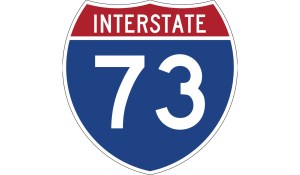Brown announces nearly $21M
Published 1:50 am Wednesday, December 29, 2021
WASHINGTON, D.C. — U.S. Sen. Sherrod Brown, D-Ohio, announced on Thursday that the United States Department of Transportation’s Federal Highway Administration has awarded five emergency response grants to the Ohio Department of Transportation for a total of $20,812,964.
Grant funding will be used to provide additional reimbursement for repairs to the state’s federal highways as a result of natural disasters and traffic incidents in recent years.
These funds were made possible through the bipartisan infrastructure law, the Infrastructure Investment and Jobs Act, which Brown helped to write and pass.
Trending
“This new funding from the bipartisan infrastructure law provides additional reimbursement for the cost of road and bridge repairs in Ohio after disasters.” Brown said in a news release. “This new funding will unlock resources for infrastructure investments across Ohio and bolster economic growth for many communities.”
FHWA funding includes the below additional payments to ODOT:
• $3,281,667 for repairs to roads and bridges damaged during storms and flooding in May 2020.
• $540,253 for repairs to roads and bridges damaged during heavy rainfall and flooding in March 2017.
• $14,864,680 for repairs to US-40 and SR-7 caused during a landslide and heavy rainfall in February 2018.
• $393,528 for repairs to State Route 376 in Morgan County as a result of a landslide during heavy rainfall in February 2019.
Trending
• $1,582,834 for repairs to roads and bridges caused by storms and landslides in April 2015.
• $150,000 for repairs to the Brent Spence Bridge caused by a truck crash and fire in November 2020.
The Emergency Response program from DOT was authorized to offer grant funding to repair or reconstruct highways and roads that receive federal funding, and those on federal lands, that have suffered serious damage as a result of natural disasters or catastrophic failures from an external cause. Eligible repair work includes emergency repairs needed to restore essential traffic, minimize the extent of damage, or protect the remaining facilities as well as any permanent repairs necessary to restore the highway to its pre-disaster condition.





